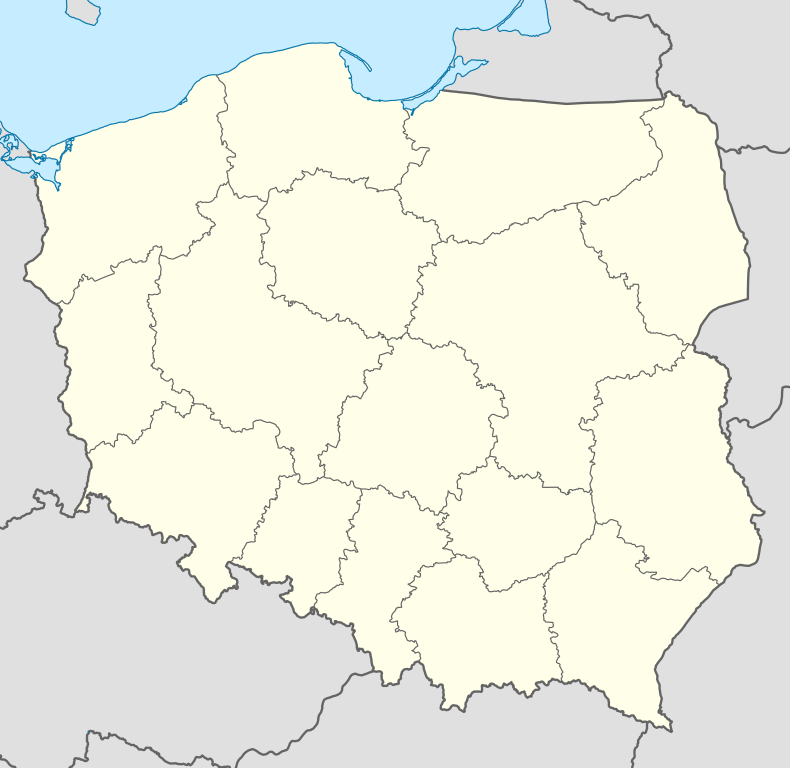Kotla, Poland
| Kotla | |
|---|---|
| Village | |
 Kotla | |
| Coordinates: 51°44′45″N 16°02′05″E / 51.74583°N 16.03472°ECoordinates: 51°44′45″N 16°02′05″E / 51.74583°N 16.03472°E | |
| Country |
|
| Voivodeship | Lower Silesian |
| County | Głogów |
| Gmina | Kotla |
| Population | 1,400 |
Kotla [ˈkɔtla] (German: Kuttlau) is a village located at the northernmost border of Lower Silesia, in south-western Poland. It lies approximately 11 kilometres (7 mi) north of Głogów and 98 km (61 mi) north-west of the regional capital Wrocław. Kotla is part of the Lower Silesian Voivodeship and of Głogów County. It is also the administrative seat of Gmina Kotla (Kotla Commune). As of 2006, this rural gmina has 4,129 inhabitants, of whom about 1,400 live in the village of Kotla. The local economy is based on agriculture and minor industry.
Prior to 1945 it was in Germany. After World War II the region was placed under Polish administration and ethnically cleansed according to the post-war Potsdam Agreement. The native German populace was expelled and replaced with Poles.
Polish writer Edward Stachura lived in the area for some time and based his "Siekierezada" ("Axing") partly on events and people he met in a Kotla watering hole.
According to some, Kotla may be a possible depository of goods removed from the city of Głogów by its German government in the months before the surrender of the city to the Red Army in April 1945. As of 2006, no such goods have been found.
External links
| ||||||||||